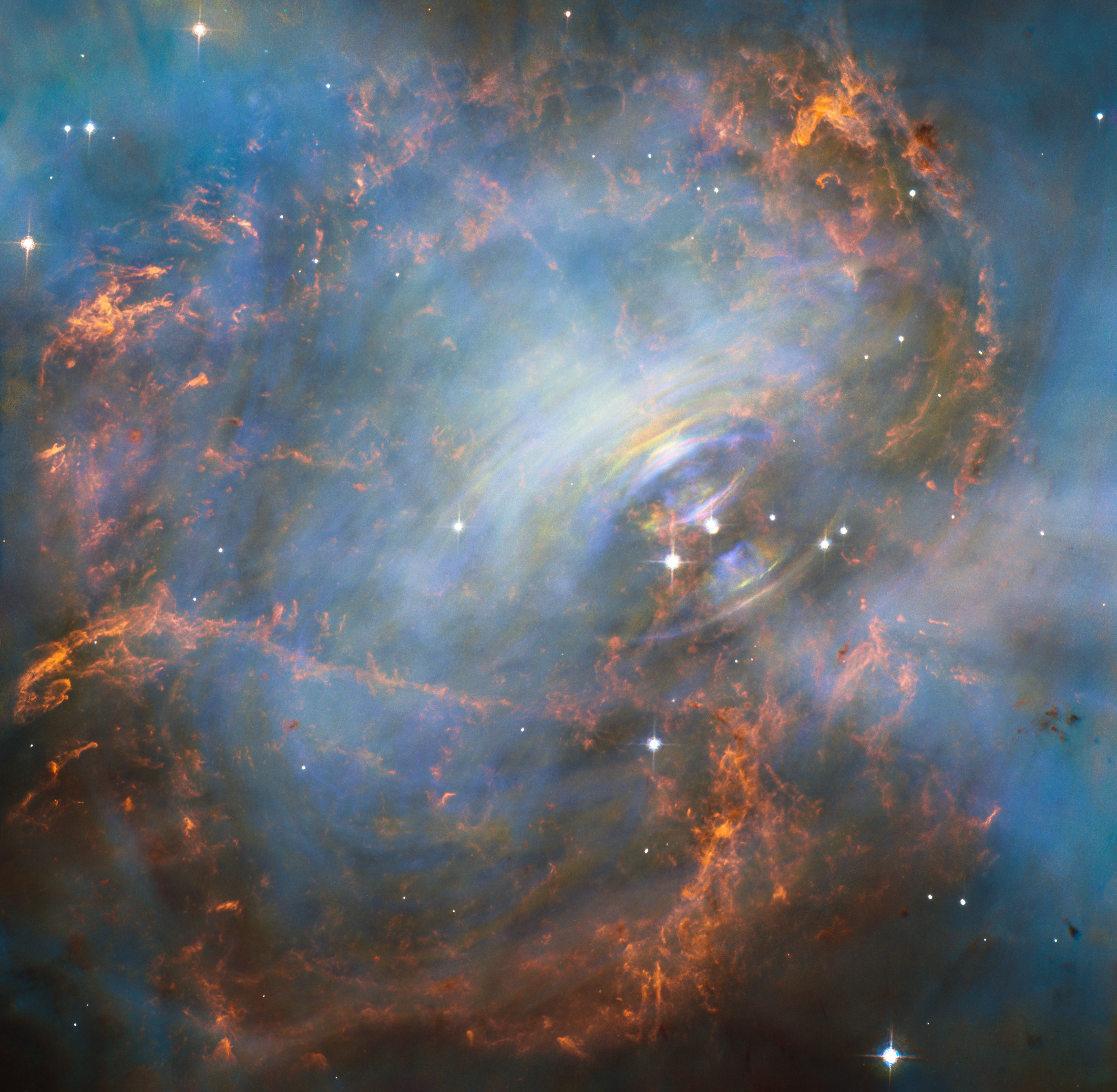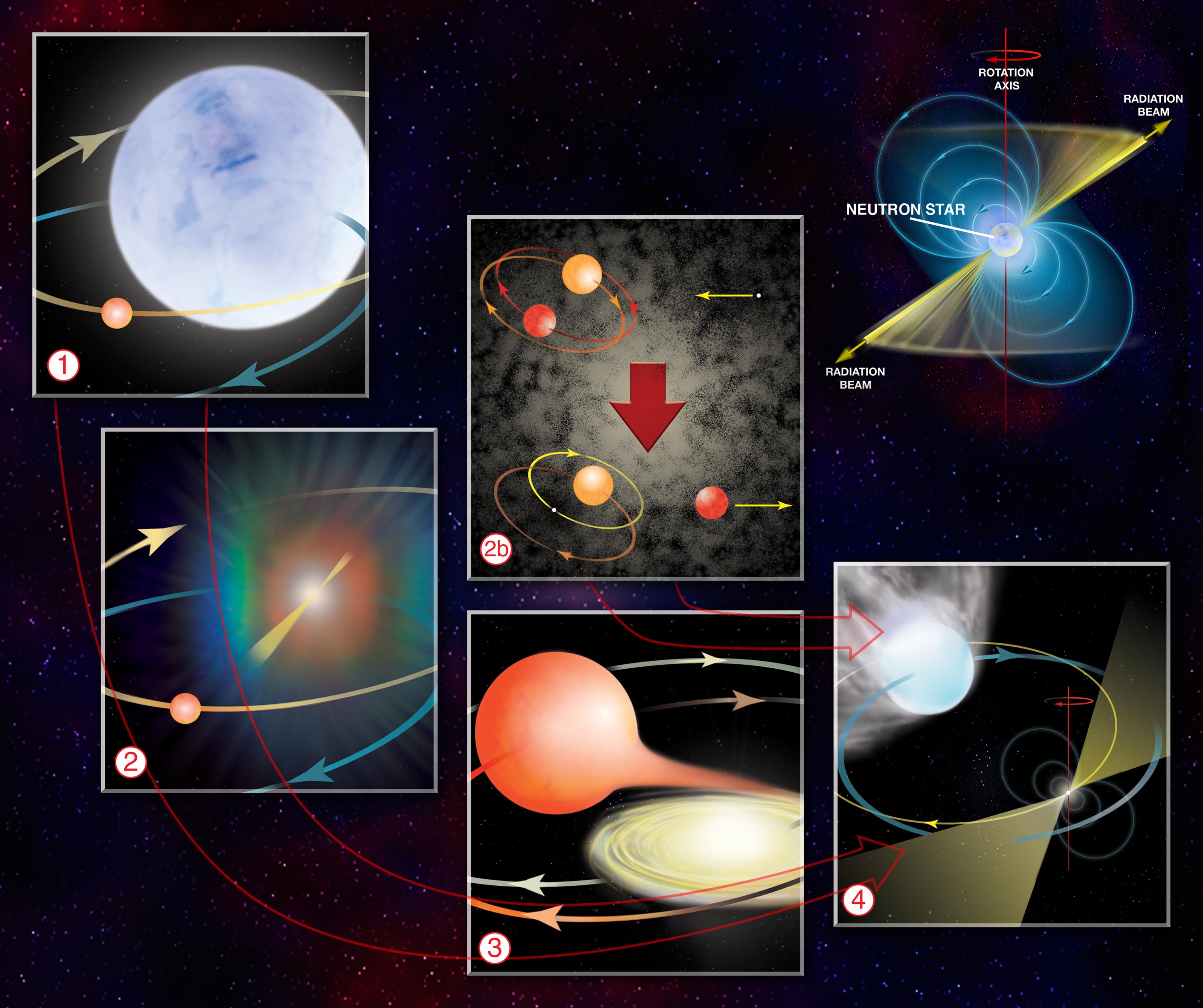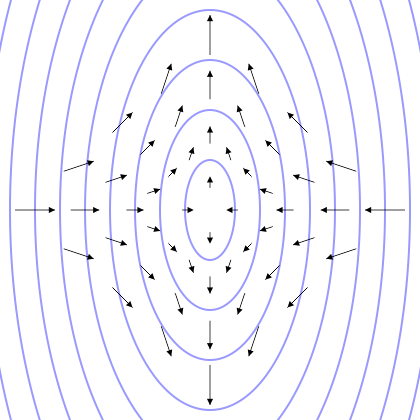|
Pulsars
A pulsar (''pulsating star, on the model of quasar'') is a highly magnetized rotating neutron star that emits beams of electromagnetic radiation out of its magnetic poles. This radiation can be observed only when a beam of emission is pointing toward Earth (similar to the way a lighthouse can be seen only when the light is pointed in the direction of an observer), and is responsible for the pulsed appearance of emission. Neutron stars are very dense and have short, regular rotational periods. This produces a very precise interval between pulses that ranges from milliseconds to seconds for an individual pulsar. Pulsars are one of the candidates for the source of ultra-high-energy cosmic rays (see also centrifugal mechanism of acceleration). Pulsars’ highly regular pulses make them very useful tools for astronomers. For example, observations of a pulsar in a binary neutron star system were used to indirectly confirm the existence of gravitational radiation. The first ext ... [...More Info...] [...Related Items...] OR: [Wikipedia] [Google] [Baidu] |
Neutron Star
A neutron star is the gravitationally collapsed Stellar core, core of a massive supergiant star. It results from the supernova explosion of a stellar evolution#Massive star, massive star—combined with gravitational collapse—that compresses the core past white dwarf star density to that of Atomic nucleus, atomic nuclei. Surpassed only by black holes, neutron stars are the second smallest and densest known class of stellar objects. Neutron stars have a radius on the order of and a mass of about . Stars that collapse into neutron stars have a total mass of between 10 and 25 solar masses (), or possibly more for those that are especially rich in Metallicity, elements heavier than hydrogen and helium. Once formed, neutron stars no longer actively generate heat and cool over time, but they may still evolve further through Stellar collision, collisions or Accretion (astrophysics), accretion. Most of the basic models for these objects imply that they are composed almost entirely o ... [...More Info...] [...Related Items...] OR: [Wikipedia] [Google] [Baidu] |
Jocelyn Bell Burnell
Dame Susan Jocelyn Bell Burnell (; Bell; born 15 July 1943) is a Northern Irish physicist who, as a doctoral student, discovered the first radio pulsars in 1967. This discovery later earned the Nobel Prize in Physics in 1974, but she was not among the awardees. Bell Burnell was president of the Royal Astronomical Society from 2002 to 2004, president of the Institute of Physics from October 2008 until October 2010, and interim president of the Institute following the death of her successor, Marshall Stoneham, in early 2011. She was Chancellor of the University of Dundee from 2018 to 2023. In 2018, she was awarded the Special Breakthrough Prize in Fundamental Physics. Following the announcement of the award, she decided to use the $3 million (£2.3 million) prize money to establish a fund to help female, minority and refugee students to become research physicists. The fund is administered by the Institute of Physics. In 2021, Bell Burnell became the second femal ... [...More Info...] [...Related Items...] OR: [Wikipedia] [Google] [Baidu] |
Millisecond Pulsar
A millisecond pulsar (MSP) is a pulsar with a rotational period less than about 10 milliseconds. Millisecond pulsars have been detected in radio pulsar, radio, X-ray pulsar, X-ray, and gamma ray portions of the electromagnetic spectrum. The leading hypothesis for the origin of millisecond pulsars is that they are old, rapidly rotating neutron stars that have been spun up or "recycled" through Accretion (astrophysics), accretion of matter from a companion star in a close binary system. For this reason, millisecond pulsars are sometimes called recycled pulsars. Origins Millisecond pulsars are thought to be related to low-mass X-ray binary systems. It is thought that the X-rays in these systems are emitted by the accretion disk of a neutron star produced by the outer layers of a companion star that has overflowed its Roche lobe. The transfer of angular momentum from this accretion event can increase the rotation rate of the pulsar to hundreds of times per second, as is observed in mi ... [...More Info...] [...Related Items...] OR: [Wikipedia] [Google] [Baidu] |
Antony Hewish
Antony Hewish (11 May 1924 – 13 September 2021) was a British radio astronomer who won the Nobel Prize for Physics in 1974 (together with fellow radio-astronomer Martin Ryle) for his role in the discovery of pulsars. He was also awarded the Eddington Medal of the Royal Astronomical Society in 1969. Early life and education Hewish attended King's College, Taunton. His undergraduate degree, at Gonville and Caius College, Cambridge, was interrupted by the Second World War. He was assigned to war service at the Royal Aircraft Establishment, and at the Telecommunications Research Establishment where he worked with Martin Ryle. Returning to the University of Cambridge in 1946, Hewish completed his undergraduate degree and became a postgraduate student in Ryle's research team at the Cavendish Laboratory. For his PhD thesis, awarded in 1952, Hewish made practical and theoretical advances in the observation and exploitation of the scintillations of astronomical radio sources ... [...More Info...] [...Related Items...] OR: [Wikipedia] [Google] [Baidu] |
PSR B1257+12
PSR B1257+12, alternatively designated PSR J1300+1240, is a millisecond pulsar, from the Sun, in the constellation Virgo, rotating at about 161 times per second (faster than the blade of a blender). It is also named Lich, after a powerful, fictional undead creature. The pulsar has a planetary system with three known pulsar planets, named "Draugr" (PSR B1257+12 b or PSR B1257+12 A), "Poltergeist" (PSR B1257+12 c, or PSR B1257+12 B), and "Phobetor" (PSR B1257+12 d, or PSR B1257+12 C). They were both the first extrasolar planets to be discovered and the first pulsar planets to be discovered—B and C in 1992 and A in 1994. A is the lowest-mass planet yet discovered by any observational technique, having somewhat less than twice the mass of Earth's moon. Nomenclature The convention that arose for designating pulsars was that of using the letters PSR (Pulsating Source of Radio) followed by the pulsar's right ascension and degrees of declination. The modern convention pre ... [...More Info...] [...Related Items...] OR: [Wikipedia] [Google] [Baidu] |
PSR B1919+21
PSR B1919+21 is a pulsar with a period of 1.3373 seconds and a pulse width of 0.04 seconds. Discovered by Jocelyn Bell Burnell on 28 November 1967, it is the first discovered radio pulsar. The power and regularity of the signals were briefly thought to resemble an extraterrestrial beacon, leading the source to be nicknamed LGM, later LGM-1 (for " little green men"). The original designation of this pulsar was CP 1919, which stands for Cambridge Pulsar at RA . It is also known as PSR J1921+2153 and is located in the constellation of Vulpecula. Discovery In 1967, a radio signal was detected using the Interplanetary Scintillation Array of the Mullard Radio Astronomy Observatory in Cambridge, UK, by Jocelyn Bell Burnell. The signal had a -second period (not in 1967, but in 1991) and 0.04-second pulsewidth. It originated at celestial coordinates right ascension, +21° declination. It was detected by individual observation of miles of graphical data trace ... [...More Info...] [...Related Items...] OR: [Wikipedia] [Google] [Baidu] |
Gravitational Wave
Gravitational waves are oscillations of the gravitational field that Wave propagation, travel through space at the speed of light; they are generated by the relative motion of gravity, gravitating masses. They were proposed by Oliver Heaviside in 1893 and then later by Henri Poincaré in 1905 as the gravitational equivalent of Electromagnetic radiation, electromagnetic waves. In 1916, Albert Einstein demonstrated that gravitational waves result from his general theory of relativity as ripples in spacetime. Gravitational waves transport energy as gravitational radiation, a form of radiant energy similar to electromagnetic radiation. Newton's law of universal gravitation, part of classical mechanics, does not provide for their existence, instead asserting that gravity has instantaneous effect everywhere. Gravitational waves therefore stand as an important relativistic phenomenon that is absent from Newtonian physics. Gravitational-wave astronomy has the advantage that, unlike elec ... [...More Info...] [...Related Items...] OR: [Wikipedia] [Google] [Baidu] |
Pulsar Clock
A pulsar clock is a clock which depends on counting radio pulses emitted by pulsars. Pulsar clock in Gdańsk The first pulsar clock in the world was installed in St. Catherine's Church, Gdańsk, Poland, in 2011. It was the first clock to count the time using a signal source outside the Solar System, and represents the second type of clock to measure time using a signal source outside the Earth, after sundials. The pulsar clock consists of a radiotelescope with 16 antennas, which receive signals from six designated pulsars. Digital processing of the pulsar signals is done by an FPGA device. Pulsar clock in Brussels On October 5, 2011, a display showing the exact time of the pulsar clock, as a repeater of Gdańsk's pulsar clock, was installed in the European Parliament in Brussels, Belgium Belgium, officially the Kingdom of Belgium, is a country in Northwestern Europe. Situated in a coastal lowland region known as the Low Countries, it is bordered by the Netherlands to th ... [...More Info...] [...Related Items...] OR: [Wikipedia] [Google] [Baidu] |
Chart Recorder
A chart recorder is an electromechanical device that records an electrical or mechanical input trend onto a piece of paper (the chart). Chart recorders may record several inputs using different color pens and may record onto strip charts or circular charts. Chart recorders may be entirely mechanical with clockwork mechanisms, electro-mechanical with an electrical clockwork mechanism for driving the chart (with mechanical or pressure inputs), or entirely electronic with no mechanical components at all (a virtual chart recorder). Chart recorders are built in three primary formats. Strip chart recorders have a long strip of paper that is ejected out of the recorder. Circular chart recorders have a rotating disc of paper that must be replaced more often, but are more compact and amenable to being enclosed behind glass. Roll chart recorders are similar to strip chart recorders except that the recorded data is stored on a round roll, and the unit is usually fully enclosed. Chart record ... [...More Info...] [...Related Items...] OR: [Wikipedia] [Google] [Baidu] |
Right Ascension
Right ascension (abbreviated RA; symbol ) is the angular distance of a particular point measured eastward along the celestial equator from the Sun at the equinox (celestial coordinates), March equinox to the (hour circle of the) point in question above the Earth. When paired with declination, these celestial coordinate system, astronomical coordinates specify the location of a point on the celestial sphere in the equatorial coordinate system. An old term, ''right ascension'' (), "''Ascensio recta'' Solis, stellæ, aut alterius cujusdam signi, est gradus æquatorus cum quo simul exoritur in sphæra recta"; roughly translated, "''Right ascension'' of the Sun, stars, or any other sign, is the degree of the equator that rises together in a right sphere" refers to the ''ascension'', or the point on the celestial equator that rises with any celestial object as seen from Earth's equator, where the celestial equator perpendicular, intersects the horizon at a right angle. It contrasts wi ... [...More Info...] [...Related Items...] OR: [Wikipedia] [Google] [Baidu] |
Declination
In astronomy, declination (abbreviated dec; symbol ''δ'') is one of the two angles that locate a point on the celestial sphere in the equatorial coordinate system, the other being hour angle. The declination angle is measured north (positive) or south (negative) of the celestial equator, along the hour circle passing through the point in question. The root of the word ''declination'' (Latin, ''declinatio'') means "a bending away" or "a bending down". It comes from the same root as the words ''incline'' ("bend forward") and ''recline'' ("bend backward"). In some 18th and 19th century astronomical texts, declination is given as ''North Pole Distance'' (N.P.D.), which is equivalent to 90 – (declination). For instance an object marked as declination −5 would have an N.P.D. of 95, and a declination of −90 (the south celestial pole) would have an N.P.D. of 180. Explanation Declination in astronomy is comparable to geographic latitude, projected onto the celestial sphere, and ... [...More Info...] [...Related Items...] OR: [Wikipedia] [Google] [Baidu] |






